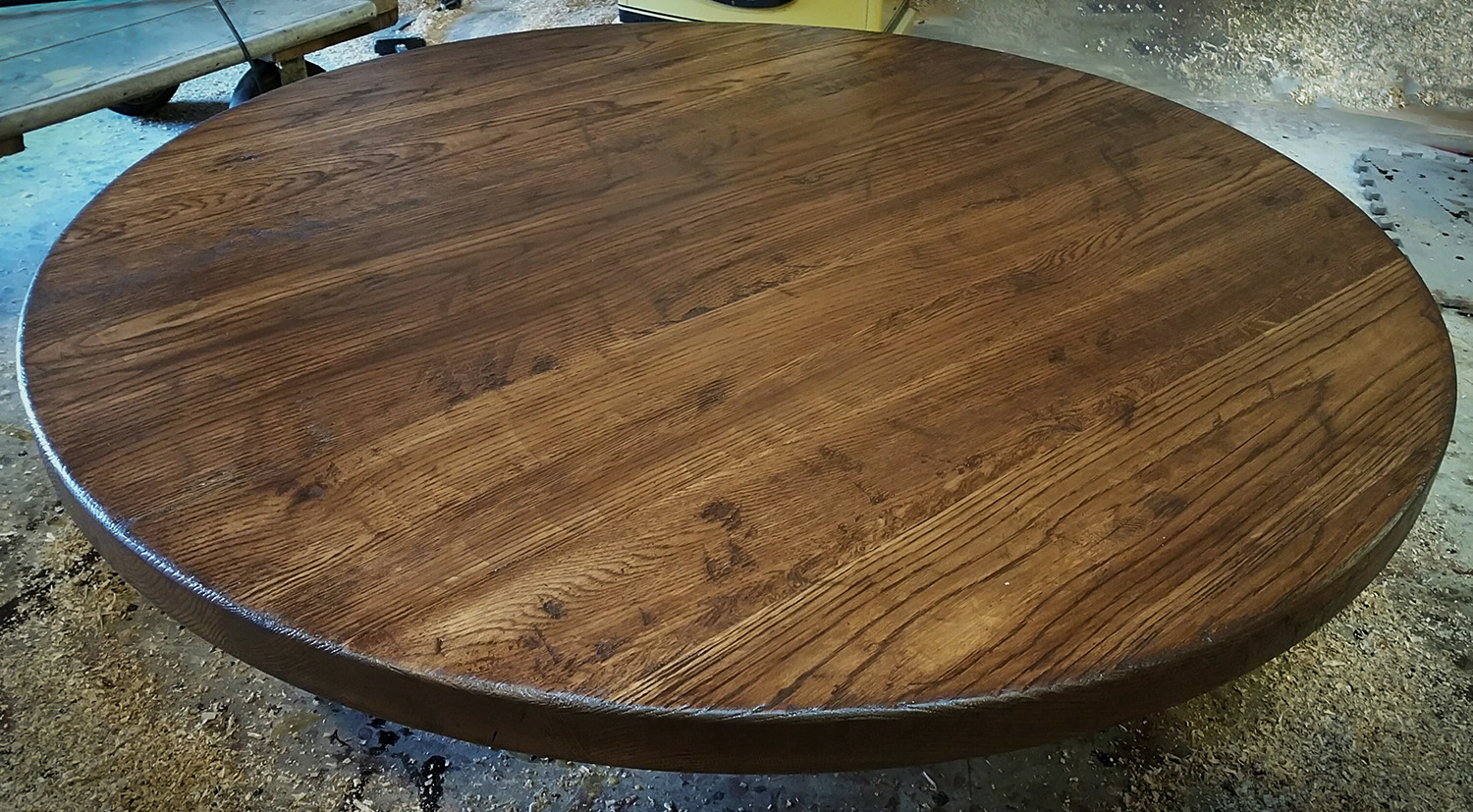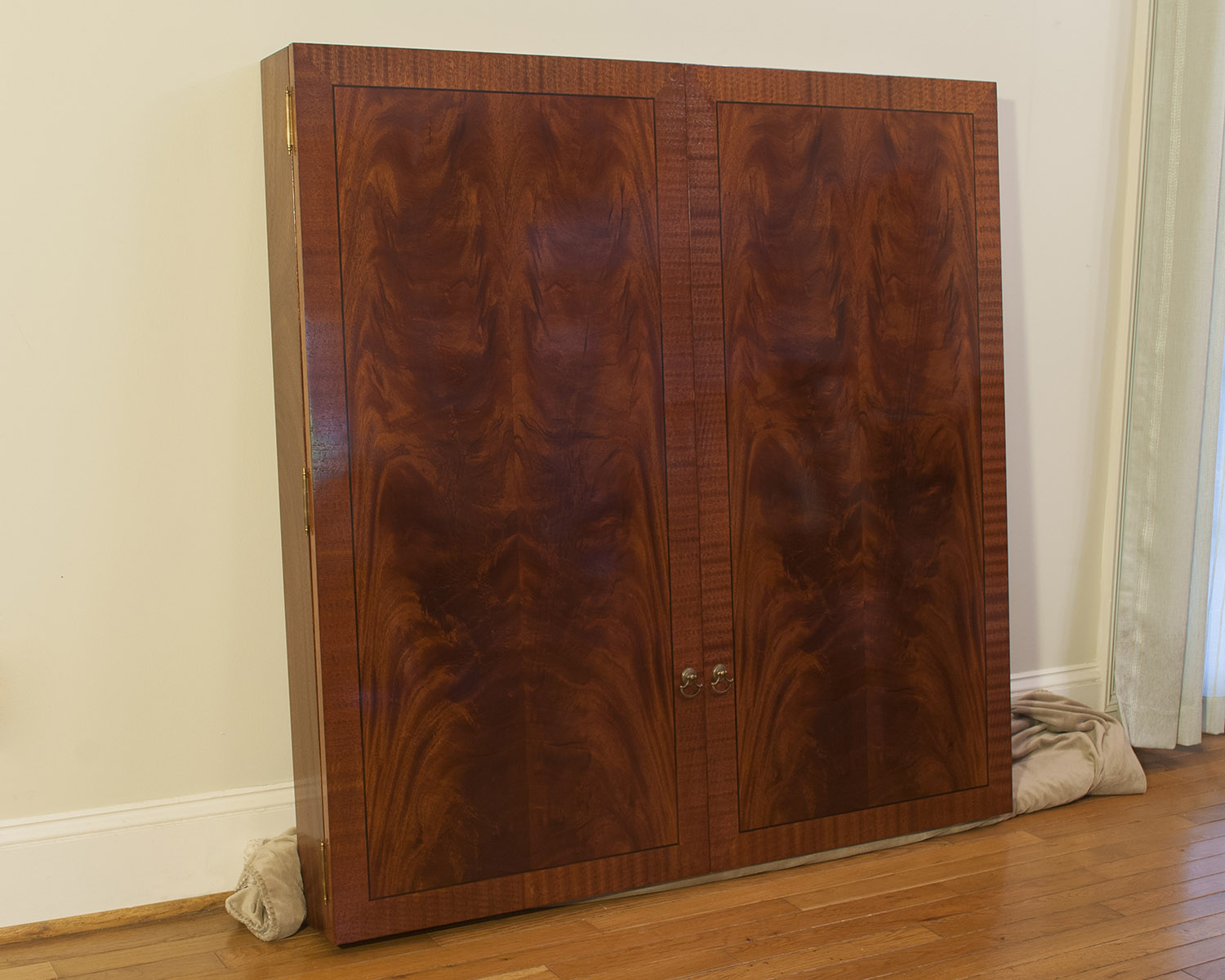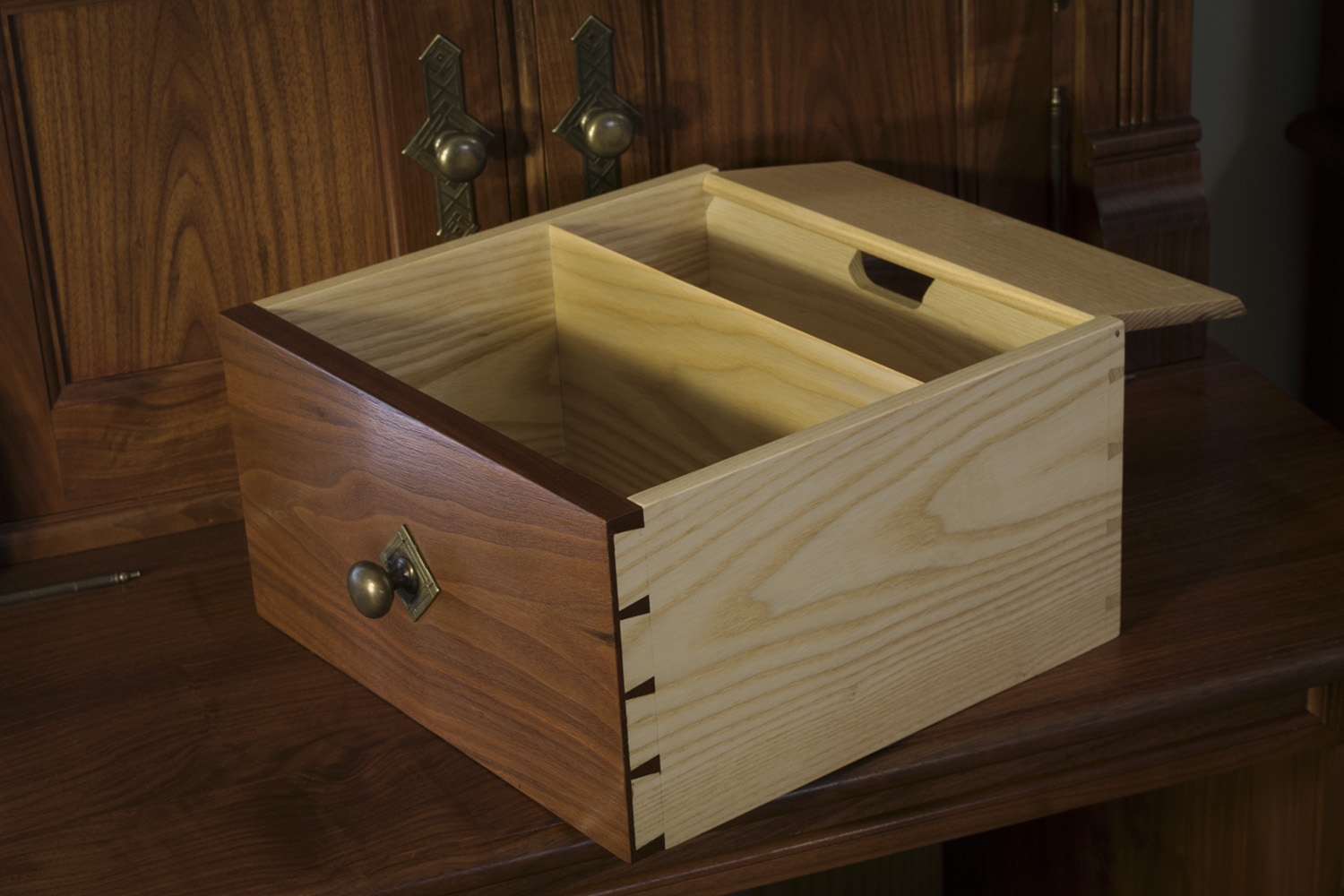There are thousands of species of wood in the world, some more suited than others for furniture making. Here are a few of my favorites.
Walnut
Walnut is one of the most popular furniture making woods in the history of the craft, for several very good reasons - it works easily, and accepts a wide range of color and finish beautifully. It is relatively inexpensive, is grown in the US, and is not endangered. It my personal favorite. I often buy walnut just to have piles of it around, waiting to be turned into furniture
Walnut has a rich, dark brown color, with tan sap wood and a fairly fine grain structure. It has open pores, but they are not large, as is the case with oak. It can be spectacularly figured, or sedate and calm.
White Oak
White oak has a fairly course, open grain structure, which can be manipulated to great result, such as in this chest, which has been wire brushed to bring out a soft texture. It can also be sanded fairly smooth, and given a refined finish. It is hard as an anvil, and as a result is often used in flooring. It accepts color reasonably well. It works easily, but can be a bit unstable, resulting in above average movement as humidity levels increase and decrease. I love white oak for certain types of projects, as it is very inexpensive in the rustic grade, and can be nicely figured. Furniture made from white oak is stout and heavy.
Mahogany
Mahogany isn't what it used to be, to put it bluntly. The vast majority of mahogany sold today is African mahogany, which is not a true mahogany.
Honduran mahogany and Cuban mahogany are "the real deal" so to speak, but both are endangered, and in many places illegal to log. There is a great deal of information available for reading online if you wish to learn more.
That said, African mahogany can be quite beautiful. It is a rich red color, works easily, and accepts a variety of finishes well. However, the quality varies greatly, and ordering a pile can be a bit like rolling dice. I tend to steer clients to walnut or cherry when possible, where quality is much more consistent.
Much higher quality mahogany is available in veneer form.
Ash
Ash has a fairly coarse, open grain structure like white oak, but is a bit finer and more consistent, color wise. It is naturally a light tan color, with occasional medium brown areas, most of which can be selected out if consistency is required. It finishes naturally to a light gold tone. It is very durable - baseball bats and some tool handles are made from ash. Ash is reasonably inexpensive, domestically grown and can be beautifully figured, as in this example of book-matched ash veneer cabinetry. Ash accepts stain reasonably well. It is a great go-to wood for any project, and works well in traditional and contemporary applications.
Cherry
Cherry is another very fine and popular furniture wood. It is a rich orange / brown color, has a closed grain structure, and can be beautifully figured. Two things to think about when considering using cherry in your project are:
- Cherry is photosensitive - it darkens with age. The more light it is exposed to, the faster it will darken. But this is a good thing. Old cherry is a thing of beauty, and much coveted (and often faked poorly).
- Cherry does not accept color well, and consequently is fussy to finish if clients want a dark tone right out of the box. I usually recommend a natural finish, which will allow cherry to do it's thing, the result of which is better than color in any can. Some people help the aging process along by placing cherry furniture in the sun, and rotating it to accept tone evenly.
Maple
Maple is a light toned, very fine-grained wood. It is hard as an anvil, and as a result is a bit tough with which to work. It can have excellent figure. I love maple as a drawer wood, as I prefer darker toned woods for furniture, with light, contrasting drawers
Macassar Ebony
Macassar ebony is used heavily in Art Deco designs. It is profoundly expensive. TCF understands the techniques required to work with this tricky wood. It is most often seen in veneer form, as the decorative effects achieved with it in that form can be amazing if done properly.







































